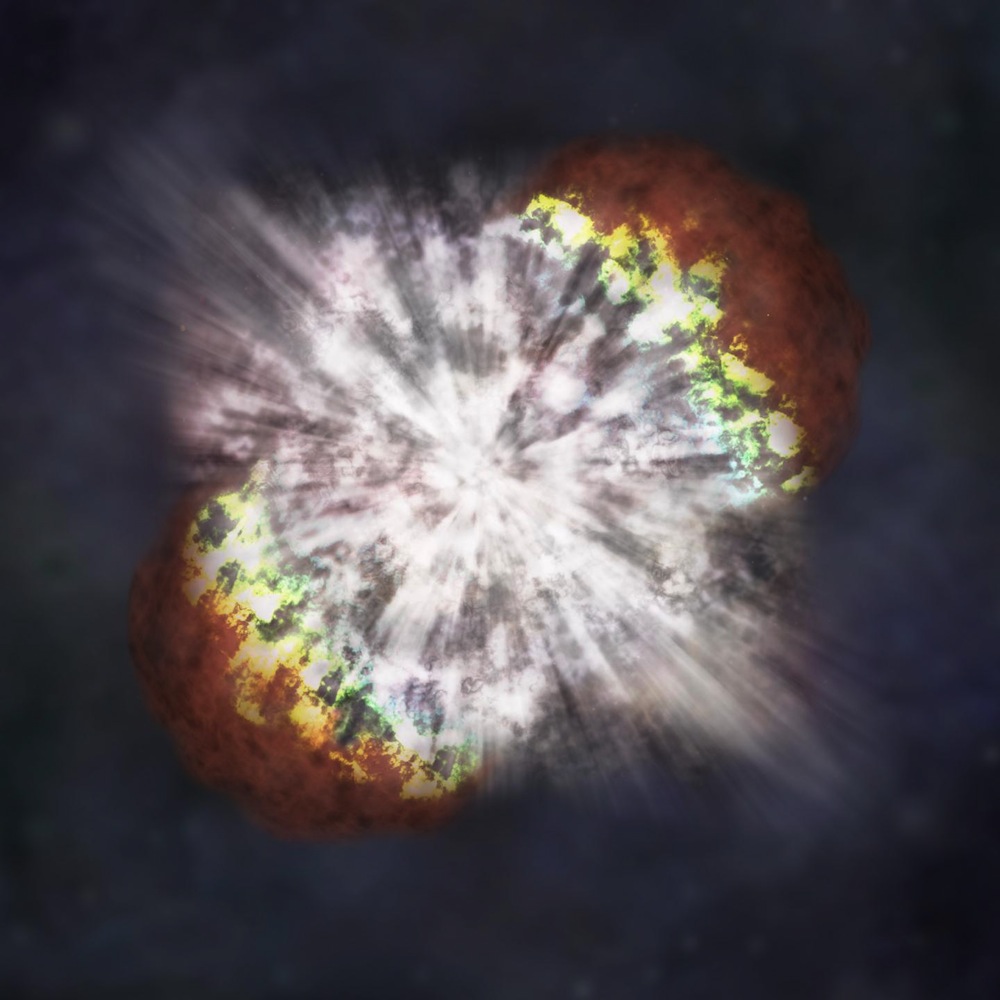Physicists Think They've Figured Out the Most Extreme Chemical Factories in the Universe

Our world is full of chemicals that shouldn't exist.
Lighter elements, like carbon and oxygen and helium, exist because of intense fusion energies crushing protons together inside stars. But elements from cobalt to nickel to copper, up through iodine and xenon, and including uranium and plutonium, are just too heavy to be produced by stellar fusion. Even the core of the biggest, brightest sun isn't hot and pressurized enough to make anything heavier than iron.
And yet, those chemicals are abundant in the universe. Something is making them. [Elementary, My Dear: 8 Elements You Never Heard Of]
The classic story was that supernovae — the explosions that tear some stars apart at the end of their lives — are the culprit. Those explosions should briefly reach energies intense enough to create the heavier elements. The dominant theory for how this happens is turbulence. As the supernova tosses material into the universe, the theory goes, ripples of turbulence pass through its winds, briefly compressing outflung stellar material with enough force to slam even fusion-resistant iron atoms into other atoms and form heavier elements.
But a new fluid dynamics model suggests that this is all wrong.
"In order to initiate this process we need to have some sort of excess of energy," said study lead author Snezhana Abarzhi, a materials scientist at the University of Western Australia in Perth. "People have believed for many years that this sort of excess might be created by violent, fast processes, which might essentially be turbulent processes," she told Live Science.
But Abarzhi and her co-authors developed a model of the fluids in a supernova that suggest something else — something smaller — might be going on. They presented their findings earlier this month in Boston, at the American Physical Society March meeting, and also published their findings Nov. 26, 2018 in the journal Proceedings of the National Academy of Sciences.
Get the world’s most fascinating discoveries delivered straight to your inbox.
In a supernova, stellar material blasts away from the star’s core at high speed. But all that material is flowing outward at about the same speed. So relative to one another, the molecules in this stream of stellar material aren't moving all that fast. While there may be the occasional ripple or eddy, there's not enough turbulence to create molecules past iron on the periodic table.
Instead, Abarzhi and her team found that fusion likely takes place in isolated hotspots within the supernova.
When a star explodes, she explained, the explosion isn't perfectly symmetrical. The star itself has density irregularities in the moment before an explosion, and the forces blasting it apart are also a bit irregular.
Those irregularities produce ultradense, ultrahot regions within the already-hot fluid of the exploding star. Instead of violent ripples shaking the whole mass, the supernova’s pressures and energies get especially concentrated in small parts of the exploding mass. These regions become brief chemical factories more powerful than anything that exists in a typical star.
And that, Abarzhi and her team suggest, is where all the heavy elements in the universe come from.
The big caveat here is that this is a single result and a single paper. To get there, the researchers relied on pen-and-paper work, as well as computer models, Abarzhi said. To confirm or refute these results, astronomers will have to match them against the actual chemical signatures of supernovae in the universe -- gas clouds and other remainders of a stellar explosion.
But it seems like scientists are a bit closer to understanding how much of the material all around us, including inside our own bodies, gets made.
- Gallery: Our Amazing Sun
- Fiery Folklore: 5 Dazzling Sun Myths
- The 12 Strangest Objects in the Universe
Originally published on Live Science.



